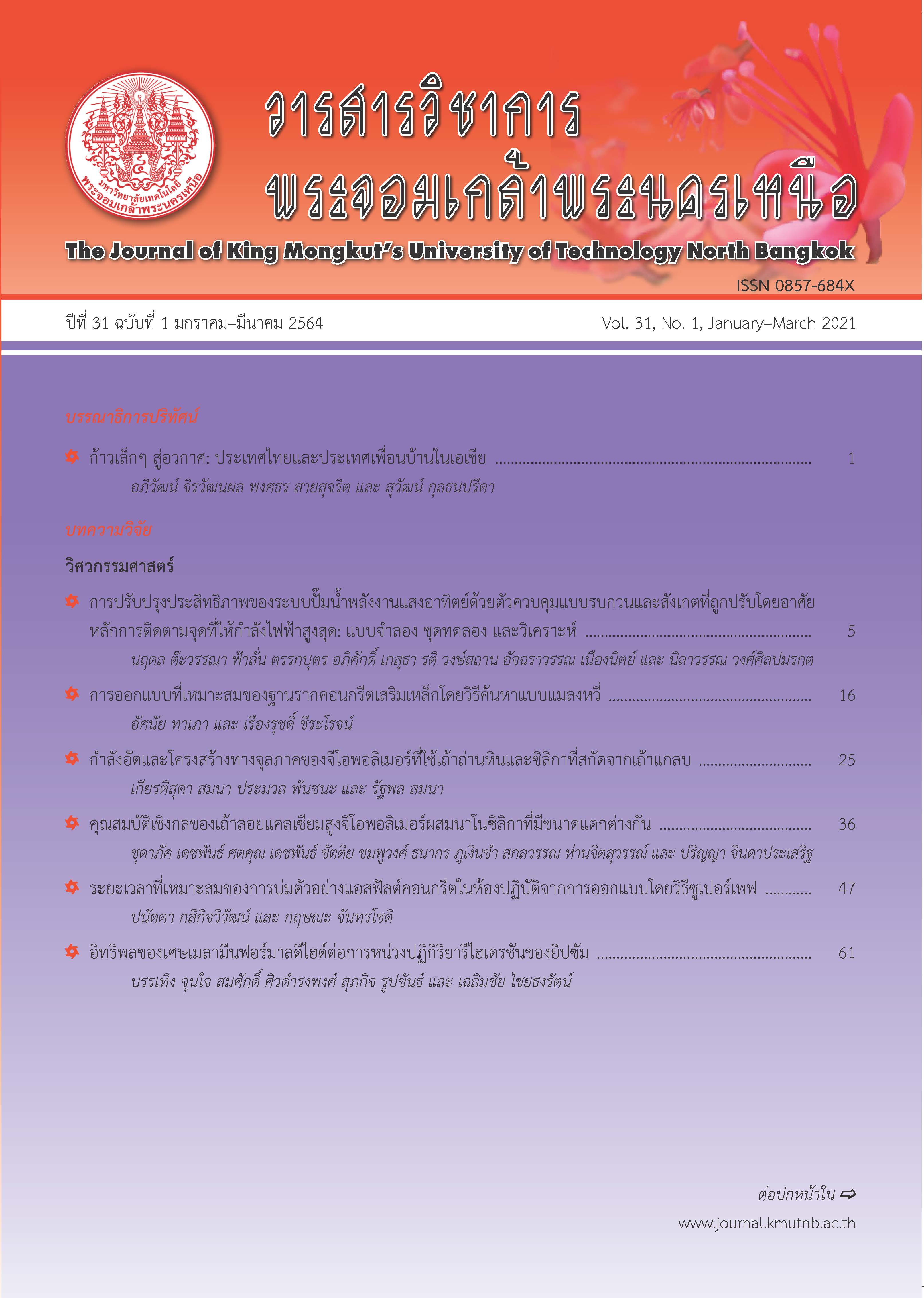Improvement the Performance of the Chest X-ray Image Classification with Convolutional Neural Network Model by Using Image Augmentations Technique for COVID-19 Diagnosis
Main Article Content
Abstract
Image classification is one interesting to the image processing. Convolutional Neural Network (CNN) is a widely used algorithm for image classification. However, the number of images is the challenge of CNN that the image classification performance depends on the number of images entering into the training process. This paper aims to improve the efficiency of the chest X-ray image classification by CNN for COVID-19 diagnosis using image augmentations techniques. We can illustrate the comparative in each method of image augmentations techniques to increase the accuracy of the training process of CNN. The results illustrate that the rotation technique provides the training efficiency of 99.67%, which is effective in chest X-ray image classification with CNN for COVID-19 diagnosis more than previous work.
Article Details
The articles published are the opinion of the author only. The author is responsible for any legal consequences. That may arise from that article.
References
[2] BBC NEWS. (2020, May). Coronavirus: The Origin, Symptoms, Treatment and Prevention COVID-19. [Online]. Available: https://www.bbc.com/thai/features-51734255
[3] J. P. Cohen, P. Morrison, and L. Dao, “COVID-19 image data collection,” arXiv:2003.11597vl, 2020.
[4] A. Abbas, M. Abdelsamea, and M. Gaber, “Classification of COVID-19 in chest X-ray images using DeTraC deep convolutional neural network,” arXiv:2003.13815v2, 2020.
[5] E. Humphrey and J. Bello, “Rethinking automatic chord recognition with convolution neural networks,” in Proceedings of the 11th International Conference on Machine Learning and Application, 2012.
[6] S. Parakkamodom, S. Chaychotcharoen, and P. Vichitvejpaisal, “Artifcial intelligence: Friend or enemy?,” Thai Journal of Anesthesiology, vol. 1, pp. 34–38, 2018 (in Thai).
[7] T. Tathawee, S. Prasarnpun, S. Onbua, T. Pinthong, and A. Suwannakom, “Orchid identification based on computer vision analysis,” in Proceedings of the 6th National Science Research Conference, Thailand, 2014, pp. 47–56 (in Thai).
[8] B. Tilmann, “The business impact of predictive analytics,” in Knowledge Discovery and Data Mining: Challenges and Realities, IGI Global, 2007, pp. 114–138.
[9] R. Kohavi, “A study of crossvalidation and bootstrap for accuracy estimation and model selection,” in Proceedings of the Fourteenth International joint conference on Artificial Intelligence, Montreal, Canada, 1995, pp. 1137–1143.
[10] J. Panyavaraporn and P. Horkaew, “Study of PET image classification methods to the preliminary diagnosis of alzheimer's disease,” UBU Engineering Journal, vol. 1, pp. 93–105, 2018 (in Thai).
[11] S. Feng, W. Jun, S. Jun, W. Ziyan, W. Qian, T. Zhenyu, H. Kelei, S. Yinghuan, and S. Dinggang, “Review of artificial intelligence techniques in imaging data acquisition, segmentation and diagnosis for COVID-19,” IEEE Reviews in Biomedical Engineering, Early Access, pp. 1–13, 2020.
[12] X. Li, C. Li, and D. Zhu, “COVID-mobilexpert: ON-device COVID-19 screening using snapshots of chest X-ray,” arXiv:2004.03042v2, 2020.
[13] P. Cheewaprakobkit, “Improving the performance of an image classification with convolutional neural network model by using image augmentations technique,” TNI Journal of Engineering and Technology, vol. 7, pp. 59–64, 2019 (in Thai).
[14] J. Sanuksan and O. Surinta, “Deep convolutional neural networks for plant recognition in the natural environment,” J Sci Technol MSU, vol. 38, pp. 113–124, 2019 (in Thai).
[15] L. Wang, Z. Q. Lin, and A. Wong, “COVID-net: A tailored deep convolutional neural network design for detection of COVID-19 cases from chest X-ray images,” arXiv:2003.09871v4, 2020.
[16] M. D. Bloice, C. Stocker, and A. Holzinger, “Augmentor: An image augmentation library for machine learning,” The Journal of Open Source Software, vol. 2, pp. 1–5, 2017.
[17] N. Hongboonmee and K. Sangtan, “Development application for identify Thai Banknote by voice for blindness via smartphone,” Journal of Information Science and Technology, vol. 2, pp. 24–34, 2019 (in Thai).
[18] T. Team. (2020, May). TensorFlow. [Online]. Available: https://www.tensorflow.org/
[19] A. Nain, S. Paul, and M. Maynard-Reid. (2020, May). Keras. [Online]. Available: https://keras.io/
[20] Y. Lecun, L. Bottou, Y. Bengio, and P. Haffner, “Gradient-based learning applied to document recognition,” in Proceedings of the IEEE, 1998, pp. 2278–2324.
[21] A. Rosebrock. (2020, January). Installing Keras with TensorFlow backend. Available: https://www.pyimagesearch.com/2016/11/14/installingkeras-with-tensorflow-backend/

